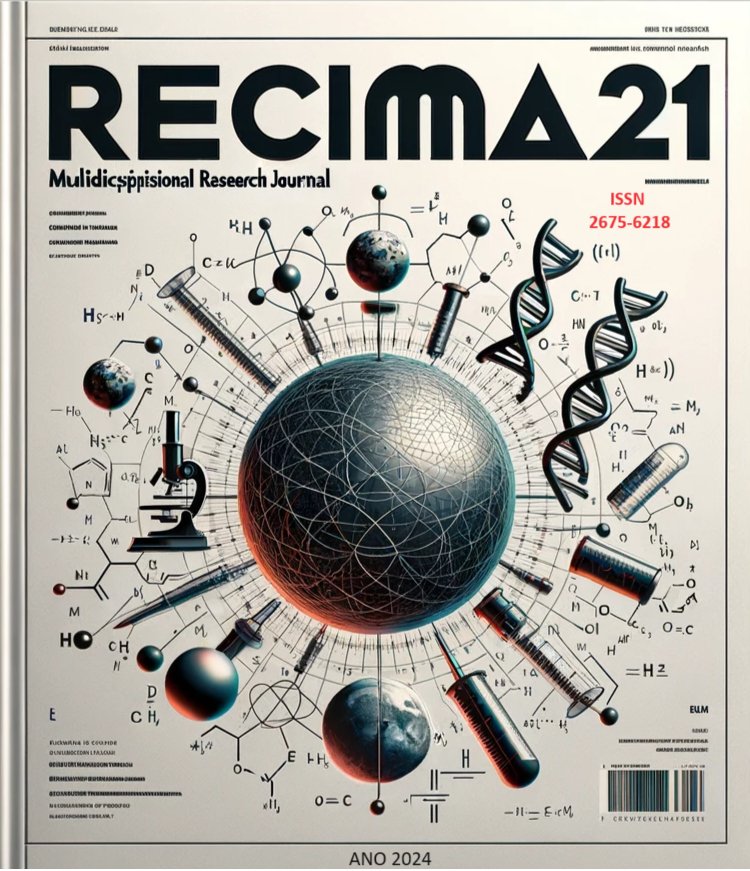ROBOTIC SURGERY VERSUS LAPAROSCOPIC SURGERY IN PROSTATECTOMY
DOI:
https://doi.org/10.47820/recima21.v5i4.5146Keywords:
Cancer. Prostate. Minimally invasive.Abstract
Introduction: Prostate cancer is one of the most common forms of cancer among men, and its incidence increases with age. Robotic and videolaparoscopic surgery are minimally invasive techniques used in prostatectomy to remove the prostate in patients with localized prostate cancer. Objectives: identify which of the techniques is most effective and which of them guarantees the greatest benefit to the patient. Materials and methods: This is an integrative review, in which the guiding question was “Is robot-assisted radical prostatectomy superior to videolaparoscopic radical prostatectomy?”. The search for articles took place in the main databases (PubMed and Scielo) using the terms “difference”, “robotic”, “laparoscopic”, “surgery” and “prostatectomy” combined with each other using Boolean operators. Results and discussion: In recent decades, robot-assisted radical prostatectomy (RARP) has gained widespread acceptance in urological surgical practice. This technique aims to achieve less perioperative morbidity, less intraoperative bleeding, and faster recovery time. The main procedural advantages of using the robotic system are improved dexterity, its precision, three-dimensional imaging and its ergonomic design for surgeons. Conclusion: The superiority of robotic-assisted radical prostatectomy over laparoscopic radical prostatectomy remains controversial. Although PRAR has been known to have many advantages in terms of functional and oncological outcomes, the cost of medical supplies, total hospitalization cost, and personal expenses were higher.
Downloads
References
CAO, Lan et al. Robot-assisted and laparoscopic vs open radical prostatectomy in clinically localized prostate cancer: perioperative, functional, and oncological outcomes: A Systematic review and meta-analysis. Medicine, v. 98, n. 22, p. e15770, 2019. DOI: https://doi.org/10.1097/MD.0000000000015770
CESAR, Lindcy Maticolli et al. Câncer de mama e próstata no Brasil: análise epidemiológica / Breast cancer and prostate in Brazil: epidemiological analysis. Arquivos Médicos dos Hospitais e da Faculdade de Ciências Médicas da Santa Casa de São Paulo, p. 1 of 5-1 of 5, 2021. DOI: https://doi.org/10.26432/1809-3019.2021.66.011
DE SOUSA, Luís Manuel Mota et al. A metodologia de revisão integrativa da literatura em enfermagem. Revista investigação em enfermagem, v. 21, n. 2, p. 17-26, 2017.
ERCOLE, Flávia Falci; MELO, Laís Samara de; ALCOFORADO, Carla Lúcia Goulart Constant. Revisão integrativa versus revisão sistemática. Reme: Revista Mineira de Enfermagem, v. 18, n. 1, p. 09-11, 2014. DOI: https://doi.org/10.5935/1415-2762.20140001
GRIVAS, Nikolaos et al. Learning curves in laparoscopic and robot-assisted prostate surgery: a systematic search and review. World Journal of Urology, p. 1-21, 2022.
HE, Shuangshuang; WENG, Yiyi; JIANG, Yifeng. Robot-assisted radical resection in prostate cancer comparative assessment with conventional laparoscopic prostatectomy: a retrospective comparative cohort study with single-center experience. Translational Andrology and Urology, v. 11, n. 12, p. 1729, 2022. DOI: https://doi.org/10.21037/tau-22-739
HEALTH QUALITY ONTARIO et al. Robotic Surgical System for Radical Prostatectomy: A Health Technology Assessment. Ont Health Technol Assess Ser., v. 17, n. 11, p. 1-172, 2017.
HWANG, Boo-young et al. A Study of 57 Patients with Prostate Cancer to Compare Outcomes of Estimated Blood Loss and Postoperative Pain Between Robot-Assisted Laparoscopic Radical Prostatectomy and Standard Laparoscopic Radical Prostatectomy. Medical Science Monitor: International Medical Journal of Experimental and Clinical Research, v. 29, p. e939584-1, 2023. DOI: https://doi.org/10.12659/MSM.939584
ILIC, Dragan et al. Laparoscopic and robot‐assisted vs open radical prostatectomy for the treatment of localized prostate cancer: a Cochrane systematic review. BJU international, v. 121, n. 6, p. 845-853, 2018. DOI: https://doi.org/10.1111/bju.14062
ILIC, Dragan et al. Laparoscopic and robotic‐assisted versus open radical prostatectomy for the treatment of localised prostate cancer. Cochrane Database of Systematic Reviews, n. 9, 2017. DOI: https://doi.org/10.1002/14651858.CD009625.pub2
LINDENBERG, Melanie MA et al. Long-term functional outcomes after robot-assisted prostatectomy compared to laparoscopic prostatectomy: Results from a national retrospective cluster study. European Journal of Surgical Oncology, v. 47, n. 10, p. 2658-2666, 2021. DOI: https://doi.org/10.1016/j.ejso.2021.06.006
LITWIN, Mark S.; TAN, Hung-Jui. The diagnosis and treatment of prostate cancer: a review. Jama, v. 317, n. 24, p. 2532-2542, 2017. DOI: https://doi.org/10.1001/jama.2017.7248
MA, Jianglei et al. Robotic-assisted versus laparoscopic radical prostatectomy for prostate cancer: the first separate systematic review and meta-analysis of randomised controlled trials and non-randomised studies. International Journal of Surgery, v. 109, n. 5, p. 1350-1359, 2023. DOI: https://doi.org/10.1097/JS9.0000000000000193
MENDES, Karina Dal Sasso; SILVEIRA, Renata Cristina de Campos Pereira; GALVÃO, Cristina Maria. Revisão integrativa: método de pesquisa para a incorporação de evidências na saúde e na enfermagem. Texto & contexto-enfermagem, v. 17, p. 758-764, 2008. DOI: https://doi.org/10.1590/S0104-07072008000400018
SANTOS, Ralf Amaral. Câncer de próstata no Estado do Rio Grande do Sul, 2018-2020. [S. l.: s. n.], 2021.
SCIARRA, Alessandro et al. Prospective comparative trial on nerve-sparing radical prostatectomy using a robot-assisted versus laparoscopic technique: Expectation versus satisfaction and impact on surgical margins. Central European Journal of Urology, v. 74, n. 2, p. 169, 2021. DOI: https://doi.org/10.5173/ceju.2021.0017.R3
SWAMI, Umang et al. Advanced prostate cancer: treatment advances and future directions. Trends in cancer, v. 6, n. 8, p. 702-715, 2020. DOI: https://doi.org/10.1016/j.trecan.2020.04.010
Downloads
Published
License
Copyright (c) 2024 RECIMA21 - Revista Científica Multidisciplinar - ISSN 2675-6218

This work is licensed under a Creative Commons Attribution 4.0 International License.
Os direitos autorais dos artigos/resenhas/TCCs publicados pertecem à revista RECIMA21, e seguem o padrão Creative Commons (CC BY 4.0), permitindo a cópia ou reprodução, desde que cite a fonte e respeite os direitos dos autores e contenham menção aos mesmos nos créditos. Toda e qualquer obra publicada na revista, seu conteúdo é de responsabilidade dos autores, cabendo a RECIMA21 apenas ser o veículo de divulgação, seguindo os padrões nacionais e internacionais de publicação.













